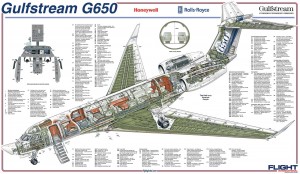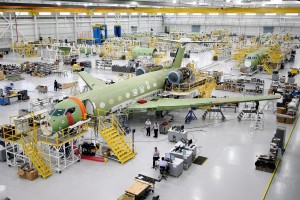

Purchasing New Business Aircraft by Mark Schweibold.
Mission Possible: Building a Winning New Aircraft Acquisition Team
“Hello New Aircraft Buyer. Your mission is to acquire a business aircraft that provides efficient, reliable and safe transportation that meets the assigned operational parameters. Assemble your team carefully and get started, but should you fail, this Agency will disavow any knowledge of your existence. Good Luck. This tape will self-destruct in five seconds…..”
Assembling the Aircraft Acquisition Team
It takes planning, teamwork and advanced skill sets to save the world from evil and so too does properly acquiring the right business aircraft under the most favorable terms and at the right price with the highest quality result. Your team needs to have a comprehensive market perspective augmented by aircraft flight and maintenance operational and acquisition experience with intricate international knowledge of regulatory, OEMs, sales, use and VAT taxes, income and excise taxes, liability, registration and legal issues. Getting your team to effectively work together could be tricky, because when it comes to business aircraft acquisition and operation, solving one problem correctly is difficult and that solution could unintentionally create another problem. Beware, aviation is a romantic industry and many get lost in the excitement of it all. Let’s gather our team together and get this Mission started.
Often, I hear the chairman say, “Buying is easy as we only buy new aircraft and we just place an order. Besides, we have many lawyers, accountants and a flight department to handle the whole thing.” There is a reason why lawyers specialize and pilots train hard at flying proficiency and safety. Likewise, there are highly skilled aircraft acquisition teams like Premier Jet Aviation having the foresight and experience for solving problems before they occur and getting it right the first time.
I do not want to minimize the role of the flight department in this process. They are in many cases the quarterbacks of the acquisition team. However, the flight department doesn’t have the legal, technical, market knowledge or experience to get every element right the first time. Mistakes on this mission could cost millions. Remember, the flight department is operating the current equipment with all of the usual interruptions: aircraft breaking down, last minute trips, regulatory and training issues, or even catering and ground transportation that doesn’t show up! The flight department has perhaps the toughest job of all. Making all these situations transparent so the principle thinks “what an easy job my flight department manager, pilots and mechanics have”, takes time, skill and dedication.
Identifying and Verifying the Target
The flight department is essential in defining the goals; however, it’s the aircraft market professional providing the global perspective on best solutions available to meet these goals with the best asset strategy. Together, you build a strategic plan to liquidate or trade the current aircraft for the new one. This process mixes tax, market, residual value, operating cost, reliability, support and utilization considerations together to transition and result in a company owning only one plane at a time while maximizing the existing asset value and paying the best price for the new plane.
Buying from an OEM – Trust but Verify 
Most of today’s manufacturers are outstanding so, in the case of new production aircraft, you can trust the manufacturers to guide you through their process right? Wrong! Unfortunately, everyone is looking out for their best interests. In the case of a new aircraft, many factors a manufacturer will not volunteer must be incorporated in the initial draft of a purchase offer. First, manufacturers provide their sales team some level of pricing flexibility. Then, the management team has the ability to make policy adjustments beyond those parameters. Many OEMs have a very wide retail pricing band (millions even on light jets) to provide an overtrade allowance for making you feel great about the value of your trade-in aircraft. So, what is the real price you are paying? Are you achieving a most favored nation status? We do.
Pricing is an obvious negotiating point, but one where few people maximize the results. For the experienced, there are many other factors that must be accounted for such as new design aircraft beginning the production cycle, changes will occur. To what degree will you be able to tolerate these performance and reliability changes and their impact on availability and operating cost? What safeguards have you built into the contracts with regards to timetables and the cost of product improvements with their associated downtime. Will your aircraft get modified during the production cycle if a change is released or will you bear the expense of downtime while you make payments and chartering an aircraft because yours is getting “upgraded”? Buyers want to trust that, between the OEM’s warranties and the personal greeting or relationship with their CEO or salesman, they will do the right thing. Invariably, the warranty breaks down first and the special CEO relationship soon after when there are costly problems – i.e., your airplane has been in the service center for a month with unscheduled issues and you just spent $200K on charter because you still needed transportation. OEM’s usually won’t make policy adjustments beyond warranty.
Understanding a manufacturer’s offer to take your plane in on trade for a percentage of its current market value sounds simple enough. What if you had ordered your new delivery aircraft years ago when things were booming to find the new aircraft has been delayed in certification or completion for over a year? Now you must either trade in the existing aircraft to the factory for a fraction of what you thought it was worth or be forced to sell it now in a very depressed market. Have you built those economic safeguards into your contract? If not, this element alone could cost you millions of dollars. Sales, VAT and use tax issues are considerable. Did the manufacturer fully discuss these implications as they relate to the completion and use of the aircraft?
Quality and Delivery Equals Mission Success
So, an agreement is negotiated and our aircraft begins the manufacturing cycle. It was a good thing we addressed being able to periodically inspect the aircraft during assembly because it definitely makes a difference in the build of your plane. Having a competent inspector who is politically savvy and able to have production workers pay extra attention to your airframe is invaluable for attaining higher grades of build quality. Post-production delivery and acceptance is where having inspection and flight test specialists working on your behalf truly pays off. Items such as paint and fit and finish need an experienced professional to avoid situations such as where we have seen paint issues buffed-out only to leave the new owner wondering why his paint faded after 3 years. In flight test, having a competent production delivery flight test pilot working on your behalf is critical. Has the aircraft been rigged to max tolerances to obtain acceptable flight handling characteristics?
Interior completion of a new aircraft has been an industry nightmare. Unexpected delays, FAA certification problems and overworked completion centers have plagued manufacturers. Your team must include skilled completion professionals who know and understand design and completion specifications following quality and budget management strategies for each stage of completion while anticipating delay scenarios well before the proposed delivery date. These specialists actually live with the aircraft during the completion process and are critical to achieving mission objectives.
A successful OEM relationship begins with finding the right team that has vast experience and capability to effectively negotiate these parameters and provide a high level of quality control while performing on-schedule and within budget. Experience matters. Congratulations on another successful mission!
